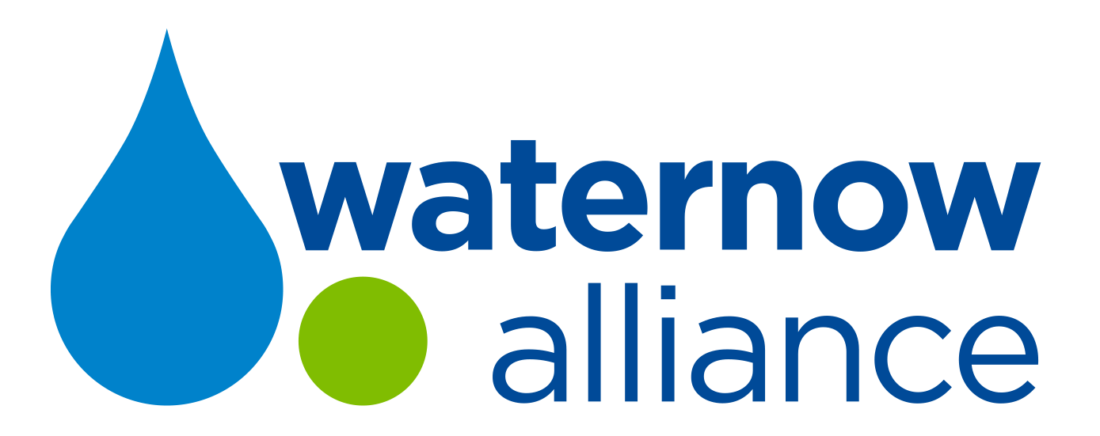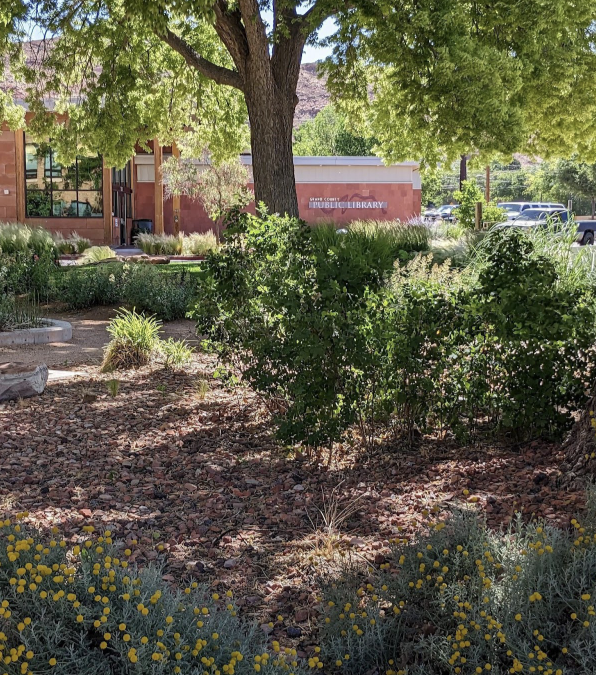Scanning the horizon of red rocks and distant mountains surrounding Moab, Utah, the area’s total average rainfall of just under 10” annually is hardly a surprise. Precious water brings life to the desert, so the City of Moab’s water conservation goal, outlined in the most recent draft of its Water Conservation Plan passed in 2021, to develop a landscaping ordinance is also unsurprising. According to the Center for Water Efficient Landscaping at Utah State University, approximately 65% of culinary water consumption is applied to outdoor landscapes in Utah.
In Moab, residential water use accounts for 60% of the City’s total average daily water use. Commercial entities account for 32% of water use; overnight accommodations account for 16%, and institutions, including all City, school, and church buildings, account for 8%. Moab City Council set a water use goal of 250 gallons per capita per day (gpcd) by 2030, with an advanced goal of 230 gpcd. More specifically, they set a target to reduce outdoor water demand in the City by 50% by 2030, in order to keep overall water demand flat despite population growth and climate change. For context, Moab was using 282 gpcd in 2015. 
In Summer 2021, Moab applied to WaterNow Alliance’s Project Accelerator Program with the goals of seeking support to develop a new water efficient landscaping ordinance that included concepts such as setting a maximum percentage of cool-season turfgrass, creating a City approved plant list, requiring irrigation systems be “smart” with automatic control, and setting a landscape water budget that would set a limit on how many gallons of water a property could devote to its annual irrigation needs, among other regulations. WaterNow, in collaboration with our partners at Western Resource Advocates, supported these efforts through review of existing waterwise landscaping ordinances across similar communities across the West, a robust stakeholder engagement process with local landscape professionals, the Moab Water Board, Planning Commission, and various City Council workshops and meetings, and drafting, revising and finalizing the code language with the Planning Department and Sustainability Director. The research and interviews helped Moab develop an ordinance tailored to local conditions and concerns.
On September 12, 2023, the Moab City Council unanimously adopted Ordinance No. 2023-08 creating a new Chapter 17.10 Water Efficient Landscaping Standards for New Developments. The primary intent of the new landscape regulations is to enhance and preserve the community’s quality of life and property values by enriching the visual environment, supporting public safety, and contributing to a resilient and sustainable environment by reducing outdoor water demand. This new ordinance applies to new landscape plans immediately.
The scale of development, redevelopment, or improvement determines the level of required landscaping standards. For example, a single-family home remodel project that triggers a building permit would not be required to abide by the irrigation efficiency standards, however a new subdivision that triggers site plan review would be required to follow all irrigation standards. Some of the specific standards are included below:
- A minimum of 25% of the landscaped area coverage must be living plant materials.
- At least 90% of all forbs, shrubs, and trees, and 100% of groundcovers and ornamental grasses must be selected from the City’s Approved Plant List.
- Cool season turfgrass is limited to 10% of the total landscaped area (or 200 square feet), whichever is greater.
- Mulch shall be applied at a minimum depth of 2-3 inches. (Some native plants are exempt from mulching.)
- Smart irrigation controllers and spray sprinkler bodies labeled by the US EPA WaterSense are required.
- The total irrigation water needed for all hydrozones cannot exceed a Maximum Applied Water Budget of 15 gallons/square foot/season (24in/season).
The ordinance also includes an indoor efficiency policy identified in the City’s Water Conservation Plan which requires all new and remodeled (or “refreshed”) lodging units and new residential units in Moab to install WaterSense-labeled fixtures (faucets, showerheads, toilets, and urinals) and Energy Star-qualified appliances. Since the hotel and tourism industry is very robust in Moab, and typically hotel rooms are refreshed every 5-7 years, this is expected to result in significant water savings.
More details on the ordinance are available on Moab’s website and in this Moab Times news article.
The passing of this ordinance qualifies Moab residents to participate in Utah’s landscape rebate program, where they can receive $3.00 per square foot to replace their grass with water-efficient landscaping, therefore incentivizing and furthering water efficient practices in the City. The City’s Sustainability Director, Alexi Lamm, and her team will also be developing a suite of educational resources related to water efficient landscaping that complements the ordinance, which will roll out in the coming months.
We’re excited that the City of Moab has made so much progress towards meeting their ambitious water conservation and drought resiliency goals and look forward to the opportunity to advance additional water conservation and efficiency policies across the Colorado River Basin states!

